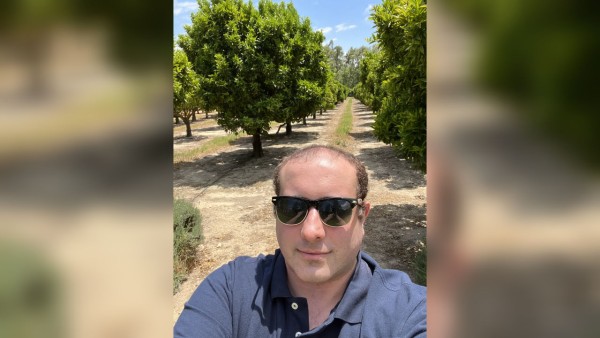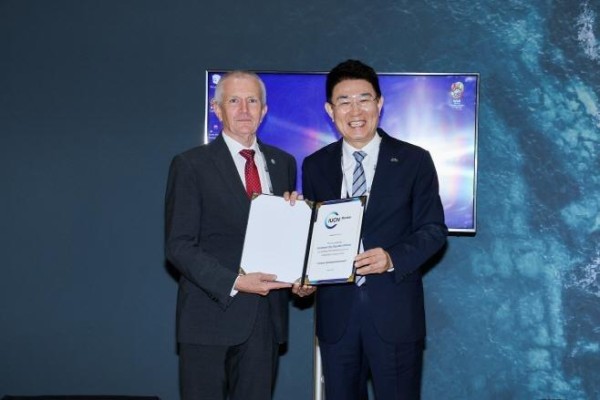Press Release
AuraCliq Launches Offering Personalized Coaching and Energy Reading Services Worldwide
Werner Truter, a renowned intuitive coach and aura energy reader, has announced the launch of his official platform, AuraCliq. Receives an overwhelming number of appointments about modern dating problems.
The eagerly anticipated launch of AuraCliq, founded by renowned intuitive coach and energy aura reader Werner Truter, has been met with an overwhelming response. The platform has already received a lineup of appointments. The founder has shared that he is surprised to see so many people coming in to discuss the dilemma they are in about modern dating.

Werner has previously shared on many occasions the unique approach and power he possesses to help people navigate this difficult dating era. The platform is offering a fresh,
deeply intuitive approach to love and relationship guidance, unlike any other service in the market.
Werner, whose clientele already spans New York, Tokyo, Dubai, and London, is renowned for his exceptional ability to sense aura, read energies, and offer thorough personalised mentorship. With the launch of AuraCliq, his services are now more convenient than ever, allowing individuals to book private sessions directly through the platform. Whether clients
arrive with a single photograph, a voice note, or simply a dream they can’t interpret, he offers insight equipped to achieve a deeper self-awareness and guide meaningful decisions.
For many, modern dating is an alien world— a conundrum of mismatched expectations, dating app fatigue, and unspoken emotional baggage. Werner sees it up close in his sessions.
“Modern dating is, well, let’s just say complicated. People come to me with all kinds of situations, some even stump me. My gift of reading energies allows me to guide them
toward the truth, whether that means healing a broken connection or helping them step away before greater disappointment sets in.”
Werner explains that the complexity of today’s romantic world isn’t just about finding the one; it’s about understanding oneself well enough to know what one wants. He has spoken
about the difficult conversations that take place and the different outcomes that result from them.
“Some clients leave my sessions heartbroken, others leave with the biggest smiles of their lives. But no matter the outcome, they walk away with clarity, closure, and a renewed sense of direction.”
AuraCliq standout feature is its inclusivity and openness. It welcomes anyone, from those wrestling with the aftermath of a breakup, to individuals questioning a new partner’s
intentions, to singles seeking to understand their romantic patterns better.
Even for those unfamiliar with energy work, the results can be startlingly accurate. One client who had no idea what to expect from the session left a review:
“I wasn’t sure what to expect, but the session was so spot on. The guidance I received about my career path gave me the clarity and confidence I needed to take the next step. I can only imagine what this will do for my love life.”
At AuraCliq, confidentiality is non-negotiable. Werner has guided some high-profile clients through deeply personal crises, but their stories remain private. However, the growing
discourse around modern relationships has led him to share select anonymised cases to help illustrate the dos and don of dating in today’s digital-first world.
While love transcends borders, dating cultures vary greatly from one country or city to another. With his extensive global experience, Werner is adept at recognising and adapting to
these cultural nuances. Whether guiding the fast-paced dating scene in New York, the subtle romance etiquette of Tokyo, or the high-status social dynamics of Dubai, his guidance arises from a blend of intuitive insight and practical understanding.
The platform also resonates with those simply seeking someone to converse with, be it about love, life, or the intricate interplay between the two. In a world where genuine human
connection often feels fleeting, AuraCliq offers something truly invaluable: a space to take a break, reflect, and reconnect with one’s emotional compass.
To celebrate its launch, AuraCliq is offering early bird discounts for new clients, with sessions starting at just $4.99/minute. This initiative makes professional, deeply personalised
Intuitive guidance is more accessible to individuals who may have never considered it before.
Appointments can be easily booked online, enabling clients to connect with Werner from anywhere in the world. The process is simple, and whether the issue at hand is romantic,
professional, or deeply personal, every session is crafted to provide actionable insights and emotional clarity.
Media Contact
Organization: Auracliq
Contact Person: Werner Truter
Website: https://auracliq.com/
Email: Send Email
City: New York
Country:United States
Release id:33781
The post AuraCliq Launches Offering Personalized Coaching and Energy Reading Services Worldwide appeared first on King Newswire. This content is provided by a third-party source.. King Newswire makes no warranties or representations in connection with it. King Newswire is a press release distribution agency and does not endorse or verify the claims made in this release. If you have any complaints or copyright concerns related to this article, please contact the company listed in the ‘Media Contact’ section
About Author
Disclaimer: The views, suggestions, and opinions expressed here are the sole responsibility of the experts. No Digi Observer journalist was involved in the writing and production of this article.
Press Release
Suncheon Joins Global Conservation Leaders as South Korea’s “Ecological Capital” Redefines Healing Through Nature
Suncheon has emerged as South Korea’s “Ecological Capital,” joining the world’s conservation leaders with a vision that unites environmental restoration and healing tourism.
Suncheon, Korea South, 30th Oct 2025 – Suncheon’s wetlands revival is drawing global attention as migratory birds return in record numbers to what was once a threatened coastal marsh. Once at risk of disappearing, Suncheonman Bay now stands as a model for ecological restoration, transforming from reclaimed land into South Korea’s “Ecological Capital.” The city’s dramatic turnaround, marked by the return of flocks of hooded cranes gliding over the golden reeds each autumn, showcases how policy, community effort, and environmental vision can create harmony between people and nature.

(Image: Flocks of hooded cranes descend over the golden reeds of Suncheonman Bay. Each autumn, the wetlands turn into a sanctuary for migratory birds—and for visitors seeking to witness one of Asia’s most poetic encounters between nature and life. Photo courtesy of Suncheon City)
Located in South Jeolla Province, Suncheon has redefined urban sustainability by putting nature first. Through bold environmental policy, community collaboration, and global engagement, the city restored its wetlands, revitalised migratory-bird habitats, and positioned itself as both a sanctuary for wildlife and a beacon for healing-centered living.
A Vision Rooted in Restoration
In years past, Suncheonman Bay’s tidal flats and reed beds faced pressure from reclamation, infrastructure, and unchecked industrial development. Recognising the ecological and social value of the landscape, local authorities made an extraordinary decision in 2009: they removed power poles and electrical lines that cut across the wetlands to protect the endangered hooded cranes wintering there. That decision, radical at the time, ushered in a broader transformation that would make Suncheon a living laboratory for ecological restoration.
Over subsequent years, the Suncheonman Bay Wetland Reserve became a thriving refuge for migratory birds and biodiversity, a place where tidal rhythms, reed fields, and quiet landscapes sustain life seldom seen in urban-centric cities.
The Garden That Bridges Nature and City
To shield this sensitive environment from urban sprawl, Suncheon created the Suncheonman National Garden, a 1.12-million-square-metre green buffer zone between the city and the protected wetlands. As Korea’s first national garden of this scale, it features ponds, wildflower meadows, walking trails, and viewing platforms, seamlessly connecting urban life to the natural rhythms of the bay.
The garden’s launch was followed by two major international garden expos, in 2013 and 2023, drawing nearly 10 million visitors and demonstrating that environmental preservation and economic vitality need not be oppositional.

(image: Suncheonman National Garden, Suncheon, South Korea. Established as Korea’s first national garden, the 1.12-million-square-meter green space serves as a buffer between the expanding city and the protected Suncheonman Bay wetlands, balancing ecological preservation with urban life. Courtesy of Suncheon City)
From Preservation to Global Leadership
In 2025, Suncheon stepped onto the global conservation stage, becoming the first local government in Korea to join the International Union for Conservation of Nature (IUCN). At the World Conservation Congress in Abu Dhabi, Mayor Roh Kwan-kyu described the city’s approach:
“We have learned to live not just alongside nature, but in trust with it,” he said. “Suncheon’s experience will become a bridge between ecology and healing for the world.”
The mayor emphasised that this is not a theoretical ideal but a practiced reality within Suncheon.
A New Vision: Healing Through Nature

(image: Flocks of hooded cranes descend over the golden reeds of Suncheonman Bay. Each autumn, the wetlands turn into a sanctuary for migratory birds—and for visitors seeking to witness one of Asia’s most poetic encounters between nature and life. Courtesy of Suncheon City)
Suncheon’s ambitions now reach beyond conservation. The city is cultivating a new paradigm of healing tourism, anchored in its natural and cultural assets. The plan invites visitors to meditate by tidal flats, walk barefoot through reeds, listen to the whisper of grasses, and rediscover balance through sound, food, and stillness. Nearby cultural jewels such as Songgwangsa Temple and Seonamsa Temple are woven into this experience, linking Korea’s spiritual heritage to ecological wellness.
In an era where wellness has become a commercialized pursuit, Suncheon offers something rarely found: the quiet restoration that only nature provides.
A Living Testament to Coexistence
As flocks of hooded cranes descend each autumn over the golden reeds of Suncheonman Bay, the wetlands transform into a sanctuary: for birds, for biodiversity, and for humans seeking refuge from the frenetic pace of modern life. Suncheon stands as a living testament to what cities can become: places that heal rather than harm, where the path to well-being begins not in clinics or spas, but in the wind, the soil, and the shared breath of all living things.
This article was written with the sponsorship of Suncheon City.
Media Contact
Organization: Public Relations Office – City of Suncheon
Contact Person: S.J Kwon
Website: https://www.suncheon.go.kr/tour/
Email: Send Email
City: Suncheon
Country:Korea South
Release id:36335
The post Suncheon Joins Global Conservation Leaders as South Korea’s “Ecological Capital” Redefines Healing Through Nature appeared first on King Newswire. This content is provided by a third-party source.. King Newswire makes no warranties or representations in connection with it. King Newswire is a press release distribution agency and does not endorse or verify the claims made in this release. If you have any complaints or copyright concerns related to this article, please contact the company listed in the ‘Media Contact’ section
About Author
Disclaimer: The views, suggestions, and opinions expressed here are the sole responsibility of the experts. No Digi Observer journalist was involved in the writing and production of this article.
Press Release
Suncheon Becomes the First Korean Municipality to Join the International Union for Conservation of Nature
City Delegation Attends 24th World Conservation Congress as VIP, Opening Global Platform to Share Its Eco-City Model.
Suncheon, Korea South, 30th Oct 2025 – The city of Suncheon has become the first basic-level local government in South Korea to join the International Union for Conservation of Nature (IUCN) and has dispatched an official delegation to the 24th World Conservation Congress (WCC) in Abu Dhabi, marking a historic step onto the international environmental stage.

Image: On October 9 in Abu Dhabi, IUCN Deputy Director General Stewart Maginnis presented the membership certificate to Suncheon Mayor Roh Kwan-kyu. /Courtesy of Suncheon City.
Founded in 1948, the IUCN is the world’s largest and most influential environmental network, bringing together over 1,400 member organizations from more than 160 countries, including national governments, local authorities, NGOs, and research institutions. Like the Red Cross, it holds official observer status at the United Nations and serves as an advisory body for UNESCO World Natural Heritage sites.
Suncheon officially gained full membership in August 2025, becoming the first Korean municipality at the basic administrative level to be admitted into the IUCN. The achievement reflects global recognition of the city’s long-term commitment to ecological preservation and sustainable urban development.
Three Decades of Ecological Leadership
Over the past 30 years, Suncheon has led pioneering environmental initiatives such as the Suncheon Bay Wetland Conservation Project, the establishment of Korea’s first National Garden, and the implementation of eco-civilization policies that balance urban growth with biodiversity protection.
The city’s consistent focus on Nature-based Solutions (NbS) — a core strategy championed by the IUCN — has made Suncheon a model of sustainable development. Through its membership, Suncheon now gains an official platform to share its eco-city model with local governments around the world.
“Suncheon’s inclusion in the IUCN community marks a new chapter in our journey toward global ecological leadership,” said Suncheon Mayor Roh Kwan-kyu. “We will continue to pioneer Nature-based Solutions and foster cooperation with international partners to protect biodiversity and build a greener, more resilient planet.”
Global Presence at the World Conservation Congress
On October 9, the Suncheon City delegation attended the opening ceremony of the 24th World Conservation Congress at the Abu Dhabi National Exhibition Centre (ADNEC) as invited VIP guests.
The ceremony brought together more than 6,000 participants, including government officials, international organization representatives, and environmental leaders such as IUCN President Razan Khalifa Al Mubarak. During the event, IUCN Deputy Director General Stewart Maginnis presented the official membership certificate to Mayor Roh Kwan-kyu, symbolizing Suncheon’s formal inclusion in the global conservation community.
Suncheon’s participation at this high-level congress positions the city as a new representative of South Korea in the field of environmental diplomacy, strengthening its partnerships with other eco-cities and international organizations.
Toward a Global Eco-Civilization
Through its IUCN membership, Suncheon plans to expand global cooperation in biodiversity conservation, climate adaptation, and sustainable city planning. The city aims to share its practical experiences in wetland restoration, eco-tourism development, and community-based conservation with partners worldwide — promoting policies rooted in harmony between people and nature.
“This membership is not only an honor but a responsibility,” said a city spokesperson. “Suncheon will continue to serve as a living laboratory of sustainability — where environmental innovation meets community participation.”
About IUCN
The International Union for Conservation of Nature (IUCN) is a global authority on the status of the natural world and the measures needed to safeguard it. Established in 1948, the organization brings together governments, civil society, and scientific experts to drive conservation and sustainable development worldwide. The IUCN advises the United Nations and UNESCO on environmental and heritage protection.
About Suncheon City
Located in South Jeolla Province, Suncheon is widely recognized as Korea’s Ecological Capital. The city is home to the Suncheon Bay Wetland Reserve, one of Asia’s most biodiverse coastal ecosystems and currently listed as a UNESCO World Heritage Site, as well as the Suncheon Bay National Garden, Korea’s first national garden and a benchmark for sustainable urban design.
This article was written with the sponsorship of Suncheon City.
Media Contact
Organization: Public Relations Office – City of Suncheon
Contact Person: S.J Kwon
Website: https://www.suncheon.go.kr/tour/
Email: Send Email
City: Suncheon
Country:Korea South
Release id:36336
The post Suncheon Becomes the First Korean Municipality to Join the International Union for Conservation of Nature appeared first on King Newswire. This content is provided by a third-party source.. King Newswire makes no warranties or representations in connection with it. King Newswire is a press release distribution agency and does not endorse or verify the claims made in this release. If you have any complaints or copyright concerns related to this article, please contact the company listed in the ‘Media Contact’ section
About Author
Disclaimer: The views, suggestions, and opinions expressed here are the sole responsibility of the experts. No Digi Observer journalist was involved in the writing and production of this article.
Press Release
FISH Token Launches in Norway – Pioneering the Future of Sustainable Aquaculture Investment Through Blockchain
Fish Token aims to revolutionize food production with real-world asset tokenization and eco-friendly innovation.

Norway, 30th Oct 2025 – In a groundbreaking development for the sustainable investment and blockchain sectors, FISH TOKEN has officially launched in Norway, introducing the world’s first real-world asset (RWA) token dedicated to environmentally responsible seafood production. Combining cutting-edge aquaculture and aquaponic technology, logistics, and waste solution development with blockchain technology, the project seeks to transform how the world grows, distributes, and invests in essential food systems.
Reimagining Food Production Through Tokenization
FISH TOKEN stands at the intersection of sustainability and financial innovation. Built to seek stable high yield from one of the most important sectors internationally and at the same time securing funding for premium quality aquaculture projects worldwide.
FISH TOKEN is positioned at the forefront of the seafood industry’s full value chain with mandatory investment in both existing listed and non-listed companies and early-stage high-yield companies in the sectors of aquaculture, aquaponics, technology, logistics and sales.
By tokenizing this model, FISH TOKEN allows investors around the world to participate in a $1 billion investment program over five years. Each FISH TOKEN, priced at $1 USD, represents fractional ownership in the company’s aquaculture investments and gives holders access to annual profit distributions equivalent to 60% of generated business profits.
Empowering Investors Through Real-World Asset (RWA) Tokenization
The RWA tokenization market, projected by PwC to reach $16 trillion by 2030, represents one of the fastest-growing segments in global finance. FISH TOKEN aims to lead this transformation by converting physical aquaculture assets into blockchain-based tokens that are transparent, tradeable, and globally accessible.
Each token holder benefits from:
- Annual Profit Sharing: 60% of net business profits distributed as Fish Tokens or stablecoins (USDC).
- Voting Rights: Participation in decentralized governance (DAO) for key operational decisions.
- Liquidity Access: Planned listings on upcoming RWA exchanges in 2026 to enable open-market trading.
- Asset Appreciation: As production capacity and market share grow, token value is expected to rise in tandem.
The project’s tokenomics allocate 75% of supply for public sale, with the remaining tokens reserved for team members, private investors, liquidity, marketing, and staking rewards. All founders and team tokens are subject to a three-year vesting period, a reflection of long-term commitment and confidence in the project’s mission.
The FISH TOKEN Team
Our team combines deep expertise in pure fish farming, facility development, traditional finance, fisheries science, Technology development, Logistics, Seafood marketing and hydroponic agriculture to close the gaps between the food producers and the financial market of crypto.
The base of the FISH TOKEN team has strong roots to the aquaculture industries worldwide and has extensive competence relevant to making good quality decisions for future investments. We aim to deliver attractive positions in scalable companies by strong risk assessment.
All investments are subject to objective due diligence processes combining biology and technology risks, authority and license risks, team competence and market standings in addition to economic scalability and profit.
By the power of the team, the FISH TOKEN team aims to take strong strategic positions as private equity actors as well as passive revenue seekers.
Sustainability Meets Profitability
What makes FISH TOKEN unique is its real-world asset Foundation. Each token is tied to tangible assets within the seafood and vegetable production industries, ensuring stable value and long-term income potential.
The company’s approach focuses on three interconnected goals:
- Sustainable Production: We aim to invest in profitable companies focusing on creating a circular ecosystem where fish and vegetables are grown symbiotically.
- Resource Efficiency: Reusing nutrients, heat, and CO₂ emissions to reduce waste as well as food-factors and production efficiency.
- Economic Growth: Leveraging by-products such as algae, organic fertilizers, protein (like Collagen), Omega 3, biogas, and pet food to create multiple revenue streams.
“Every drop of water and every gram of nutrient is reused to generate value,” added Co-Founder Børge Søraas, a recognized expert in recirculating aquaculture systems. “We’re redefining food production efficiency while giving investors meaningful participation in environmental progress.”
By repurposing nutrient-rich wastewater from fish farms to grow vegetables, we create a closed-loop system that reduces environmental impact, conserves water, and ensures year-round productivity. This integrated approach offers strong potential for sustainable growth and long-term returns.

“FISH TOKEN is not just another crypto project; it’s a global sustainability mission,” said Founder Trond Vegger, a veteran industrialist in aquaculture and renewable food production. “We’re giving investors the chance to be part of a cleaner, smarter, and more sustainable food system that benefits both the planet and their portfolios.”

Norway Leads the Charge in Sustainable Aquaculture
Norway has long been recognized as a global leader in sustainable aquaculture, and FISH TOKEN builds on this legacy. The country’s commitment to environmentally conscious seafood production and transparent industry practices has made it an ideal home for this initiative.
By merging blockchain transparency with eco-innovation, FISH TOKEN democratizes access to aquaculture investment, empowering everyday investors to support sustainability while earning income. The model encourages broader participation, traceable supply chains, and decentralized governance, paving the way for a more transparent and inclusive seafood economy.
Funding the future of Seafood production
As global demand for nutritious food rises alongside environmental regulations and consumer expectations, the need for scalable, sustainable seafood production is more urgent and more financially attractive than ever. This transformation requires capital and FISH TOKEN is designed to unlock it. Whether someone is an investor seeking long-term returns or a seafood innovator looking for funding, FISH TOKEN connects capital with impact. Every token holder becomes a stakeholder in the future of seafood, helping build a circular, eco-efficient industry with global relevance and year-round productivity
A Vision Built on ESG Principles
At its heart, FISH TOKEN’s mission aligns with Environmental, Social, and Governance (ESG) principles. The company integrates AI-based water quality monitoring, energy-efficient systems, and sustainable fish feed alternatives to reduce environmental impact while maintaining profitability.
“Our approach combines technology, biology, transparency, trust, and finance,” said Co-Founder Frode J. Dvergsdal, a strategic planner for the project. “Through blockchain, we’re ensuring every transaction, every production cycle, and every environmental decision is recorded immutably. It’s not just sustainable; it’s verifiable.”
Roadmap to 2030: From Concept to Global Expansion
FISH TOKEN’s roadmap lays out a clear and ambitious plan for growth:
- Q1 2026: Private share conversion and early investor round
- Q3 2026: First public sale valued at $15 million; RWA exchange listing
- Q2 2027: Launch of FISH TOKEN staking pool
- Q4 2027-2030: Expansion into aquaponic farming, seaweed and algae production, and biogas facilities across the USA, Europe, and Asia
- 2030: Global tokenization of additional aquaponic assets under the FISH TOKEN umbrella
Global Food Demand and the Rise of Aquaponics
As the world’s population approaches 10 billion by 2050, the need for efficient and eco-friendly protein sources is becoming urgent. Traditional agriculture and fishing have reached their environmental limits, making aquaponics, a system that combines aquaculture with hydroponic farming, a vital solution.
This system uses 90% less water than traditional farming and produces seven kilograms of vegetables for every kilogram of fish, creating a model that supports both food security and climate goals.
“We’re building an ecosystem where sustainability and profitability coexist,” said Co-Founder Jonas Ntiako, an expert in RAS systems. “The FISH TOKEN initiative gives investors the unique opportunity to be part of this future, a future where every investment nourishes both people and the planet.”
Watch, Learn, and Invest in the Future
To see how FISH TOKEN is changing the face of sustainable investment, visit their official YouTube channel for insights into aquaponic innovation, behind-the-scenes updates, and interviews with the founders.
For additional information, visit www.fish-token.com or follow LinkedIn updates here.
Media Contact
Organization: Fish Token
Contact Person: Trond Vegger
Website: https://www.fish-token.com/
Email: Send Email
Country:Norway
Release id:36326
The post FISH Token Launches in Norway – Pioneering the Future of Sustainable Aquaculture Investment Through Blockchain appeared first on King Newswire. This content is provided by a third-party source.. King Newswire makes no warranties or representations in connection with it. King Newswire is a press release distribution agency and does not endorse or verify the claims made in this release. If you have any complaints or copyright concerns related to this article, please contact the company listed in the ‘Media Contact’ section
About Author
Disclaimer: The views, suggestions, and opinions expressed here are the sole responsibility of the experts. No Digi Observer journalist was involved in the writing and production of this article.
-
Press Release1 week ago
Emdoor Digital Shines at Hong Kong Electronics Fair, Ushering in a New Era of Intelligence with All-Scenario AI Terminal Devices
-
Press Release5 days ago
Breaking Barriers for Entrepreneurs: Why Nicholas Sgalitzer Believes NexTech Labs is the Missing Link for Startups
-
Press Release6 days ago
10 Questions to Ask Before Fertility Treatment, with Project Life
-
Press Release2 days ago
ReyVend Unveils Next-Generation AI Vending and Smart Cooler Platform, Pioneering the Future of Automated Retail
-
Press Release6 days ago
Premier Glow Lights Up the Party Scene with Fresh LED Novelties and Night-Golf Solutions
-
Press Release6 days ago
Lykyn Smart Mushroom Grow Kit The Easiest Way to Grow Gourmet Mushrooms at Home
-
Press Release4 days ago
Ustyle Magazine Redefines Digital Media with Fashion Beauty and Lifestyle Trends
-
Press Release3 days ago
XNAP Token Set to Launch on Major DEX Platforms This November 2025 — Fueling the Synapse Power Ecosystem



